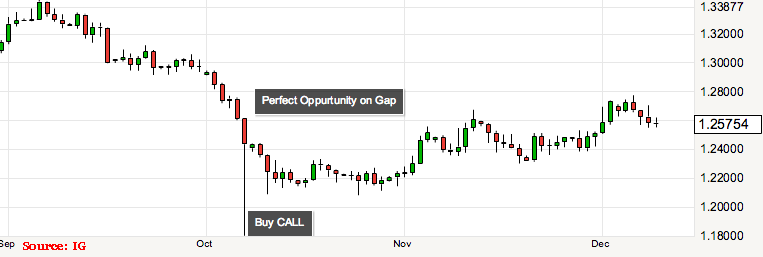In a previous post, we analysed our first two in a list of the top Binary Trading Strategies. These included the trend trading strategy and the straddle.
In this post we will go over some of the other most popular Binary Strategies that a trader can use on any number of assets.
Have a Money Management Strategy
Before you can actually begin trading with particular strategies, you need a money management strategy. This is usually the one strategy that can make or break your trading success. Essentially, this should determine how much you plan to invest on each trade as a percentage of your available funds.
Many new traders make the mistake of putting too much money on new trades with no strategy around what their maximum loss limits are. Hence, even if the strategy may be a profitable one over an extended period of time, the trader nearly loses their entire investment on one trade.
Hence, before you begin trying out any new Binary Option investment strategies, you have to define a determined amount that you would be trading both in terms of trade size and total invested in the particular strategy.
Trading Gaps in Asset Prices
On occasion, assets can have large jumps in their prices. These jumps are called “gaps”. These gaps usually occur after there has been a pause in trading like over a weekend or overnight. An example could be the price of Gold closing at $1,200 on Friday evening but then jumping to $1,210 on Monday morning. This gap of $10 presents an interesting opportunity for the investor to trade.
At its heart, a Gap trading strategy relies on the fundamentals of Supply and Demand. As an asset either gaps higher or lower, investors will either want to buy or sell at the most opportune time.
Gaps can also occur intraday on so called “news gaps”. These are as a result of a particular news story that causes the price of the asset to react irrationally and gap.
Once you have successfully identified a gap, there are a number of options that you can trade to take advantage of this gap. You will enter either a CALL or a PUT option depending on the direction of the gap. You will also need to decide your own timeframe for the option. This obviously depends on the type of asset, it’s usual volume and the size of the Gap. Generally, the bigger and faster the Gap was, the shorter your trade timeframe can be.
In this case, the likelihood of a quick correction in the price is quite high. On the other hand, if the Gap is not one that is not outsized (within one standard deviation) then a longer expiry time for the option is warranted.
An example of an ideal Gap trade could have been the recent flash crash of Sterling in early October this year. In this case, the gap was caused by a collapse in liquidity and a flood of automated sell orders by machine trading systems. This can be seen in the below graph. Sterling crashed below the 1.2 level and even touched the 1.18 level. This fall breached 6 standard deviations which showed how outsized it was. In this case, the trader could have entered a call option on the pair the moment after the fall. This would have been an extremely profitable trade as it rebounded to levels that it had been at before the crash.

Trading Price Channels
Price channels are an extension of a trend trading strategy. However, unlike standard trend investing, price channels assume that an asset will remain between two levels as it progresses. A channel will usually have a lower and an upper boundary for trading.
In order to identify the price channel, the trader must first determine what time frame the trade must take place over. This will allow the trader to most appropriately chart the parameters used in the trade.
Much like drawing a trendline on a normal trend trade, the upper and lower boundaries of the trade are shown by drawing a line on two of the recent highs and lows. This will give the trader an idea of the levels that the stock is likely to continue trading in defined by the upper and lower boundaries.
This is the type of strategy that lends itself well to using tunnel options. There are two types of tunnel options that area now being offered by brokers. These are namely tunnel options where the investor is taking a view that the price of the option will either stay between or go outside of the channel over the entire life of the option or whether it will expire inside or out of the channel limits on termination.
Assuming that your view on the channel is that the stock will not breach the upper or lower boundary over the life of the trade, then a tunnel option trade of the first variety is the best choice.
More Strategies
There are plenty more Binary Option strategies to examine. Apart from those that we have not looked at yet, there are a number of variants of the above trades that one can adapt given their view. We will be back with our third instalment of some of the most successful Binary Option strategies.




